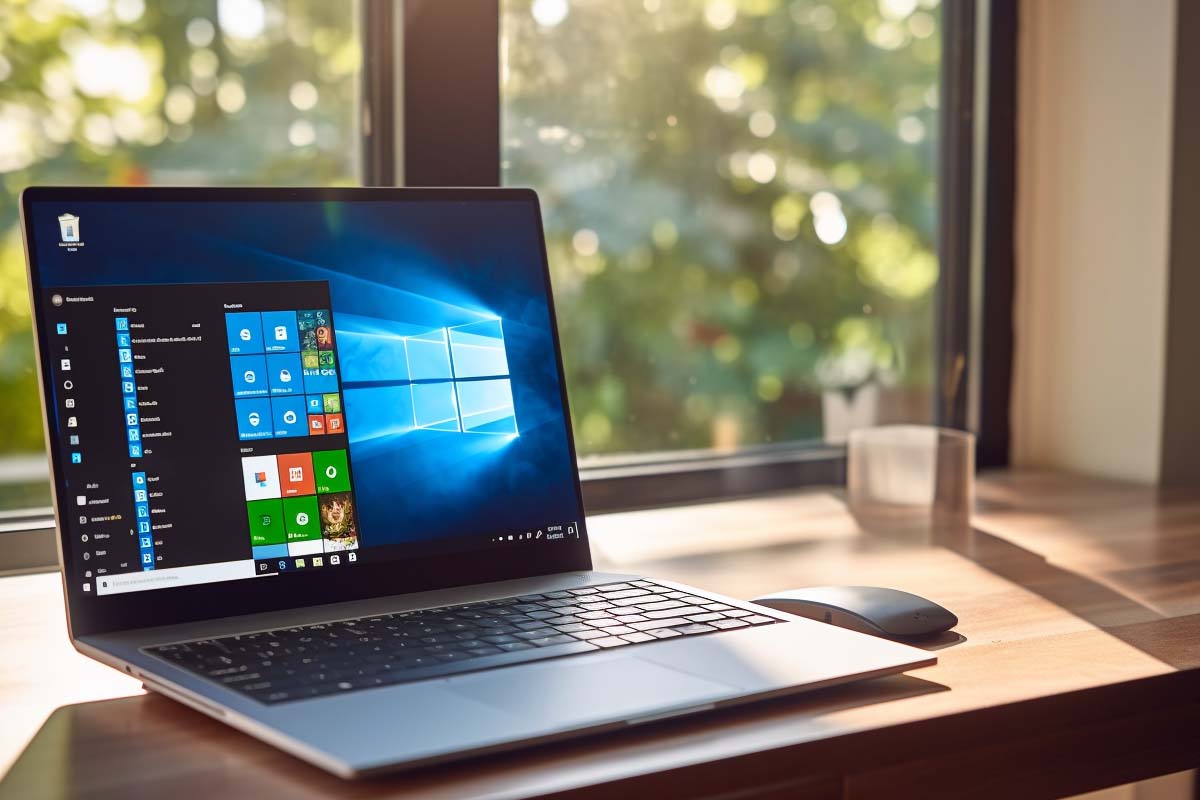What is a BIOS Update?
Definition: BIOS UpdateA BIOS update refers to the process of upgrading the firmware of the Basic Input/Output System (BIOS) of a computer’s motherboard. BIOS is a critical software component embedded

Remote Server Administration Tools (RSAT) for Windows is a suite of tools provided by Microsoft that allows administrators to manage roles and features that are installed on remote servers which are running Windows Server. These tools are designed to run on a client computer (Windows client) and connect to the server remotely, providing a convenient way for administrators to manage servers without having to log in to each server directly.
RSAT can manage various features and roles, such as Active Directory, DHCP, DNS, File Services, Group Policy, and others. It’s especially useful in environments where there are multiple servers, and centralized management becomes crucial.
This comprehensive training series is designed to provide both new and experienced network administrators with a robust skillset enabling you to manager current and networks of the future.
The Remote Server Administration Tools (RSAT) suite includes a variety of management tools and consoles designed to streamline the administration of Windows Server roles and features. The specific tools available may vary slightly based on the version of Windows and the updates installed, but generally, the set includes:
RSAT also includes command-line tools and PowerShell modules that provide a scripting interface for server management, adding flexibility and automation potential for administrators.
It’s important to note that not all tools are available in every version of RSAT, and some may depend on the specific roles and features installed on the target servers. Furthermore, Microsoft occasionally deprecates certain tools or components in newer versions, replacing them with more modern management interfaces or utilities.

Your career in information technology last for years. Technology changes rapidly. An ITU Online IT Training subscription offers you flexible and affordable IT training. With our IT training at your fingertips, your career opportunities are never ending as you grow your skills.
Plus, start today and get 30 days for only $1.00 with no obligation. Cancel anytime.
When discussing or using RSAT (Remote Server Administration Tools), it’s beneficial to be familiar with certain terms and concepts. Here’s a table with relevant terms and their definitions:
| Term | Definition |
|---|---|
| Active Directory (AD) | A directory service developed by Microsoft for Windows domain networks. It stores information about members of the domain, including devices and users, and allows administrators to manage permissions and access to network resources. |
| Domain Controller (DC) | A server that responds to security authentication requests (logging in, checking permissions, etc.) within the Windows Server domain. |
| Group Policy | A feature in Windows that provides centralized management and configuration of operating systems, applications, and users’ settings in an Active Directory environment. |
| PowerShell | A task-based command-line shell and scripting language designed especially for system administration. RSAT tools can be used through PowerShell cmdlets. |
| DNS (Domain Name System) | A hierarchical decentralized naming system for computers, services, or other resources connected to the Internet or a private network. It translates more readily memorized domain names to the numerical IP addresses needed for locating and identifying computer services and devices with the underlying network protocols. |
| DHCP (Dynamic Host Configuration Protocol) | A network management protocol used on IP networks whereby a DHCP server dynamically assigns an IP address and other network configuration parameters to each device on a network so they can communicate with other IP networks. |
| File Services | Services that provide a system for storing, accessing, and managing files on a network. |
| Hyper-V | A virtualization feature built into Windows, which allows users to create and run a software version of a computer, called a virtual machine. |
| IP Address Management (IPAM) | A method used to plan, track, and manage the IP address infrastructure on a network. |
| Network Policy Server (NPS) | A networking server that allows you to create and enforce organization-wide network access policies for client health, connection request authentication, and connection request authorization. |
| Remote Desktop Services (RDS) | A server role in Windows Server that provides technologies that enable users to access session-based desktops, virtual machine-based desktops, or applications in the data center from both inside a corporate network and from the Internet. |
| Volume Activation | A product activation technology used to activate Windows operating systems and Office products. |
| Server Manager | A management console in Windows Server used to install, configure, and manage server roles and features. |
Understanding these terms can significantly enhance your grasp of RSAT and its capabilities within a Windows Server environment.

View our comprehensive training series covering all the key elements and certifications needed to successfully excel in an IT User Support Specialist job role.
RSAT (Remote Server Administration Tools) is a suite of tools provided by Microsoft that allows system administrators to manage roles and features of Windows Server remotely from a client computer. RSAT is crucial for administrators as it enables them to manage the infrastructure without having to log directly into each server, thus streamlining and securing the management process by centralizing tasks.
Yes, RSAT can be used to manage different versions of Windows Server. However, it’s important to note that the version of RSAT installed on the client machine should correspond to the version of the Windows client OS you are using, and it’s recommended to use the latest version of RSAT compatible with your client OS for managing earlier Windows Server versions.
For Windows 10 (version 1809 and later) and Windows 11, RSAT can be installed as an optional feature directly from the Settings app. Go to ‘Settings’ > ‘Apps’ > ‘Optional Features’ > ‘Add a feature’, then select the specific RSAT tools you need and install them. Alternatively, you can also install RSAT using PowerShell commands.
Before installing RSAT, ensure your computer is running a compatible version of the Windows client OS. You should also have network connectivity to the servers you intend to manage and the necessary administrative privileges on those servers. Furthermore, check for any specific dependencies or prerequisites for the particular RSAT tools you plan to use.
RSAT is primarily designed to manage servers within a local network or corporate environment. However, with proper network configuration and security measures (like VPN, correct DNS settings, and necessary firewall configurations), you can use RSAT to manage servers over the internet. It’s crucial to ensure secure connections to protect your servers and data when managing them remotely over the internet.
Lorem ipsum dolor sit amet, consectetur adipiscing elit. Ut elit tellus, luctus nec ullamcorper mattis, pulvinar dapibus leo.
$49.99 Original price was: $49.99.$16.99Current price is: $16.99. / month with a 10-day free trial
Definition: BIOS UpdateA BIOS update refers to the process of upgrading the firmware of the Basic Input/Output System (BIOS) of a computer’s motherboard. BIOS is a critical software component embedded
Definition: Fixed IP AddressA Fixed IP Address, also known as a static IP address, is an IP (Internet Protocol) address that is manually configured for a device or server and
Definition: Domain ControllerA Domain Controller (DC) is a server within a computer network that responds to security authentication requests such as logging in, verifying user permissions, and enforcing security policies
Definition: Machine LearningMachine Learning (ML) is a subset of artificial intelligence (AI) that allows computer systems to automatically learn and improve from experience without being explicitly programmed. ML algorithms use
The Network Layer is the third layer of the OSI (Open Systems Interconnection) model, and it is responsible for the routing and forwarding of data across interconnected networks. The primary
Definition: Edge ComputingEdge computing is a distributed computing model that brings computation and data storage closer to the location where it is needed, such as on a device or at
Definition: CyberArkCyberArk is a global leader in cybersecurity solutions, specializing in Privileged Access Management (PAM). Its platform is designed to secure, manage, and monitor privileged accounts, which are typically targeted
Definition: Data SovereigntyData sovereignty refers to the concept that digital information is subject to the laws and governance structures of the country where it is collected, processed, or stored. This
Definition: Data SovereigntyData sovereignty refers to the concept that digital data is subject to the laws and governance structures of the country where it is stored. This means that data
In data management, backup types refer to the different methods used to create data backups, allowing organizations to safeguard important data from loss, corruption, or disasters. Selecting the appropriate backup
Definition: File Allocation Table 32 (FAT32)File Allocation Table 32 (FAT32) is a file system developed by Microsoft and introduced in 1996 as an extension of the older FAT16 format. FAT32
Definition: Network ScanA network scan is a process used to identify active devices, open ports, and available services on a computer network. It is a critical technique for network administrators
ENDING THIS WEEKEND: Train for LIFE at our lowest price. Buy once and never have to pay for IT Training Again.

Get ready for the updated 220-1201 & 220-1202 exams with our brand-new CompTIA A+ training—designed to help you pass with confidence and start your IT career strong. Access this course and over 2,900 hours of expert-led IT training when you sign up for any of our All-Access Passes. Don’t miss out—enroll now and start learning today!